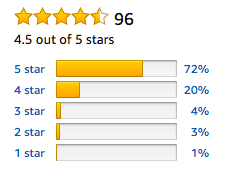
by Prashant Yadav | Apr 12, 2019 | Childhood, Life lessons, Mission Happiness, Social, Stories, Strategy
Another of the granddad’s stories.
In a small town there lived a rich merchant. He had two employees – one, a highly educated one and the other uneducated, perhaps even illiterate.
However, the ding was that the uneducated one drew a much higher salary than the educated one. Now, like all educated folks out there, he felt bad about it. Initially, like a nice educated person, he tried to keep it to himself but then, the angst took over him. He confronted the merchant.
The merchant listened to him and said, “I’ll answer this at the right time.” The educated employee left.
Then one day, a cart passed by the merchant’s door. Merchant called the educated guy and asked him to see what was in the cart. The man left, asked the cart rider and came back, “Sir, he is carrying cotton.”
The merchant said, “Ok. Where is he taking it?”
The educated employee left, the cart had travelled farther by some distance so he went up to him and asked and again came back. “Sir, he is going to Sumerpur.”
“Ok,” said the merchant, “is it for sale?”
The educated guy went out again. The cart had gone further away, so he ran to the cart and asked him and came back.
“Yes sir, it is for sale.”
“What price?”
The educated guy looked at the merchant and then bolted out the door, ran again to the cart that had almost reached the next village and then came back, panting for breath. “Ten Rupees for the entire cart.”
The merchant thought for a while, and said, “Will he give it for seven?”
The educated guy ran again. The cart had crossed the next village. After an hour, he came back. “Sir, the best he will do is eight.”
The merchant thought for a moment and then said, “Never mind.”
After a while another cart passed by. The merchant called his uneducated employee and asked him, “See what is in there.”
The uneducated guy went out and came back, “Sir, he is carrying wheat. He is going to Gopalpur market to sell it. He says it is twelve Rupees for the entire cart but he will give it here for eight.”
The merchant looked at the educated guy and said, “Now you know why I pay him the higher salary?”
This story again was left without clear interpretations. With so much focus on education at my granddad’s place, I knew the message was not anti-education. This story, again, I have heard many times from granddad and mom.
Interpretations, again, to the grown ups.

by Prashant Yadav | Oct 11, 2018 | Social, Women
So, metoo hit India. Powerful men in media and entertainment called out on predatory behaviour.
Will it end male privilege and predatory behaviour? Tough to say. Also, yet to be seen is what course metoo takes, still early days. But one interesting trend is indeed secular – a lot of these stories talk of women in parties who got drunk and were assaulted. A lot of them talk of a consensual relation existing, then ending but the man still continuing to act as an asshole. Counter-voices talk of media trials and how the accused should get a chance to be heard. They also say that this can be misused by individuals or vested interests.
But, and that is a big one, no one has come out saying, “What was she doing getting drunk with men at midnight?” or, “She was already sleeping with him and it is a domestic spat,” or, “What clothes were she wearing?”. On Twitter, in media, the loudmouths, the culture custodians, the Bapus who would say, “Call your rapist bhaiyya,” none has come out questioning the clothes, the timing, her drinking or even her being in a non-marriage sexual relationship (wherever a consensual relationship, existed, ended and then the man assaulted her).
This, to me is a major trend. Are we, in India, finally getting ready to accept women as sexual creatures with their own agency over their sartorial, socialisation, career and sexual choices? Tall wish, tough ask. True.
So, why is no one slut shaming yet when this has been the go-to response – I’ve had conversations with people who slut shamed even in Delhi December 2016 rape (Nirbhaya) case. People in high places would be in wait and watch mode – see what direction it takes, see what all tumbles out, see what casualties are and see how much damage it causes to the predators. But common man, in conversations at paan shops and tea stalls and coffee houses too isn’t pointing out at her drinking at 2 in the night with men. A lot of it would be due to the fear of opprobrium – even the staunchest misogynist would keep his trap shut in the current climate. But still, this complete absence of slut shaming from the counter narrative to metoo is telling and it makes me hopeful. Somewhere it does mark the beginning of people at large seeing women as legitimate sexual beings and sex being a strictly consensual activity between two adults.
We have been trained in a toxic patriarchal environment, both men and women. But the new trends and new values are training us to look at things differently. I think metoo and the outrage over it is a strong training that could just mark the advent of an era when women can have choices without being judged.
Whether workplace harassment will stop due to metoo is still suspect but slut shaming could just be beginning to crumble.
Hasn’t 2018 been the best year for women in India?
(Image courtesy: Scroll.in)

by Prashant Yadav | Sep 27, 2018 | Politics, Social, Women
Yes, despite all that, “yatra naryasto pujyante, ramante tatra devtah” or “our god gives women full rights to a fulfilling life, (of course, in accordance with his rules)” – all religions have treated women badly. Some less, some more. Sometimes violently vicious, exploitative and sometimes through shame, honour and propriety.
Fact also is that religions have controlled men too – but the extent to which men have had the leeway to choose and also, get away is way higher than allowed/practiced in most religions.
Why so?
World religions originated in vastly different eras in far off continents across the world. Some spread through sword, some through sugar and some didn’t bother. They can’t agree if god is one or several, if god is a man (woman) or energy or a whisper in my ear. They can’t agree if the god resides in every stone or a specific stone or a wooden statuette. They can’t agree if I can marry once, four times or never at all. Heck, they can’t even agree if I can eat germs, cows or pigs or only curd rice. But, they all agree on one thing.
Women need to be controlled. That set, obviously they have to make examples of women that break ranks – how else will the control work.
Question is, why the religions that originated over thousands of year gaps across thousands of miles in different places, cultures, peoples, conditions with so much diversity in everything else converge on one thing – their treatment of women.
A wise man I know has an interesting perspective. It starts with a simple question.
Which religion would survive? The one that keeps having followers.
So, what would religions do? Try to increase the number of followers. Exactly like market share businesses.
And how to have more followers? Two ways: a) Conversion, and b) Reproduction. Conversion works for the ‘others’ – coerce, induce, indoctrinate. Reproduction works from the inside – and where does reproduction happen? You guessed it. Women’s bodies.
If the followers are products of religions, women’s bodies are the machines producing them. Obviously, you would want the machines to be under your control. (All those ‘machines grow brains then kill humans’ Terminator movies in Hollywood just show how much we fear machines getting independent). No wonder religions, clerics, men and everyone with power did their best to control ‘machines’.
And hence, the wise man says, all religions despite bitter, even violent disagreements on matters like the right length of the pajamas or the optimum dip of the ghoonghat, agree on one thing – women’s bodies need to be controlled.
Patriarchy directly follows from that, and with that, all else.

by Prashant Yadav | Sep 26, 2018 | Politics, Relationships, Social, Stories
Mahabharata has always appeared to me as the mother of all literature – any story that can ever exist has already been done in Mahabharata. Revenge, love, envy, friendship, lust, greed, valour, cowardice, conflict, conspiracy, family dispute, friends, lovers, illicit lovers, brothers, brother-sister, mother-son, father-daughter, non-romantic boy-girl friendship (long before Mohnish Behl): everything. Only, there isn’t a single father-son bonding story.
True, there are fathers and sons. We have Yayati, who exchanges his old age with his son Puru’s youth. (His other son, Yadu who refuses to the exchange gets cursed – by dad, who else?). We have Shantanu who allows Ganga to drown his seven sons so as not to annoy her. And the eighth son who he rescues (a curious sudden bursting forth of fatherly love), he manipulates him into vowing lifelong celibacy so that daddy dearest could walk home with the next hottie by the riverside, Satyavati. We have Bhim who fathers Ghatotkach on his trips to the jungle and then uses him to neutralise the Vasavi Shakti (that Indra gave Karna), with, of course, his life.
Sons in general have been good. Dhrishtadyumna kills Drona to avenge dad Drupad’s humiliation. Oh, and that brings us to the first ‘good dad’ story – Drona at least decides to be killed once he learns son Ashwatthama is dead. Not much by the way of love or bonding but at least a dad who isn’t an asshole. Dhritarashtra – Duryodhana: we see a powerless dad more than any great love or bonding between them. Another good dad is Vasudev who drops his new born Krishna to Gokul – but here again, there is no dad-son bonding, more like an instinct to save a new born. See, the bar for a good dad is so pathetically low!
Same with Ramayana – you won’t find a single warm, strong, rich, dad-son story. Come to history and you will find dad-sons fighting each other for kingdoms.
Why is dad-son bond so less explored in literature? Tough to believe it just slipped off the minds of the great story tellers across thousands of years across the globe.
(Pic courtesy: unspalsh.com)

by Prashant Yadav | Sep 25, 2018 | Politics, Social
Global business? World level corporate leadership? Lingua franca of international business? Fair enough. Only, a much higher percentage of IIT grads go abroad, do Masters and PhDs in foreign Universities, work internationally but still you can take IIT JEE in Bangla, Oriya, Kannada or Malayalee – without ever attempting to answer even Physics and Mathematics in English. And CAT, with most of IIM grads working in India tests the admission aspirants in English.
Lets take another defence. IIM grads need to be top scorers in an English test so that they can access and understand the best global practices, benefit from cutting edge ideas internationally to lead their companies. Fair enough. Major hole – the success of IIT grads globally shows that one doesn’t need to be a top scorer in English to do any of that. Another funny thing, this need to be a top scorer in English doesn’t stand for UPSC IAS exam – this when a bureaucrat works in much more complex situations with a much higher variability and would benefit much more from understanding the best global ideas.
So, we have both the counter-examples. a) A huge group of IIT grads who never top-scored in English and still do well in global corporations, and, b) a huge group of bureaucrats who handle much more complex problems in a more variable environment than a corporate leader but are never required to top-score in an English test.
Something seems amiss. Either no one thought it through – highly unlikely though not impossible. Or, people did think it through – to answer this, let’s imagine what happens if CAT stops testing for English. Not hard to answer – small town, mofussil India will crowd up the IIMs, as they do the IITs and IAS – the predominance of DU, Bombay University, Presidency Kolkata – elite universities will break.
Is it deliberate? Malicious? A walled garden for elites? Serious statements those.
But not tough to see that a) top-scoring in an English test is neither required for achieving global corporate leadership, nor learning global best practices to solve complex problems, and, b) certain predominance structures will break if CAT stops testing English.






